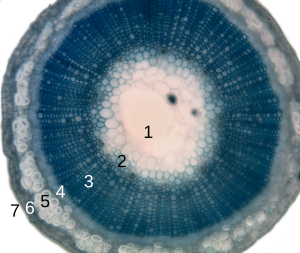Tissue facts for kids
The word tissue has a few different meanings, but they all generally refer to something thin or a group of similar parts working together. You might hear about tissues in your body, or the soft paper tissues you use every day. Let's learn more about what "tissue" means!
Contents
What is Tissue?
The word "tissue" can describe many things. It can be a vital part of living organisms, a common household item, or even a tool for acrobats! Understanding the different meanings helps us use the word correctly.
Tissue in Biology
In biology, a tissue is a group of similar cells that work together to do a specific job in an organism. Think of cells as tiny building blocks. When many of these blocks, all designed for the same task, come together, they form a tissue. Tissues are essential for life and make up all the organs in your body.
Types of Tissues in Your Body
Your body has four main types of tissues, each with its own important role:
- Epithelial tissue: This tissue covers surfaces and lines cavities in your body. Your skin is made of epithelial tissue, protecting you from the outside world. It also lines your digestive tract and other organs.
- Connective tissue: This tissue supports, connects, and protects other tissues and organs. Bones, cartilage, fat, and blood are all types of connective tissue. They give your body structure and help transport substances.
- Muscle tissue: This tissue is responsible for movement. There are three kinds: skeletal muscle (which moves your bones), smooth muscle (found in organs like your stomach), and cardiac muscle (which makes your heart beat).
- Nerve tissue: This tissue sends and receives messages throughout your body. Your brain, spinal cord, and nerves are all made of nerve tissue. It allows you to think, feel, and react to your surroundings.
Tissue as Paper Products
When you think of "tissue" in everyday life, you probably think of paper. Tissue paper is a general term for very thin, soft, and often translucent paper. It's used for many different purposes because of its delicate nature.
Everyday Tissue Paper
- Facial tissue: These are the soft, absorbent papers you use to blow your nose or wipe your face. They are designed to be gentle on your skin and are very common in homes and schools.
- Wrapping tissue: This thin paper is often used to wrap gifts or protect delicate items inside packages. It adds a nice decorative touch and a layer of cushioning to keep things safe.
- Paper for personal hygiene: This refers to the soft paper used in bathrooms for cleaning after using the toilet. It's an important part of staying clean and healthy every day.
Special Tissue Papers
- Japanese tissue: This is a special type of tissue paper made in Japan. It's known for being very strong and durable, even though it's incredibly thin. It's often made from plant fibers like mulberry and is used in art, conservation, and crafts.
- Tissue (cloth): Sometimes, "tissue" can also mean a very thin, light, and transparent fabric. Imagine a delicate scarf or a sheer curtain; these might be described as having a "tissue-like" quality.
Tissue in Arts and Performance
The word "tissue" also describes equipment used in a thrilling art form!
- Aerial tissue: This is an exciting acrobatic art form and one of the circus arts. Performers climb, wrap, and hang from long pieces of strong fabric, often called "silks" or "tissues," suspended high above the ground. It's a beautiful and challenging performance that requires great strength, flexibility, and artistic skill.
See also
 In Spanish: Tejido para niños
In Spanish: Tejido para niños


